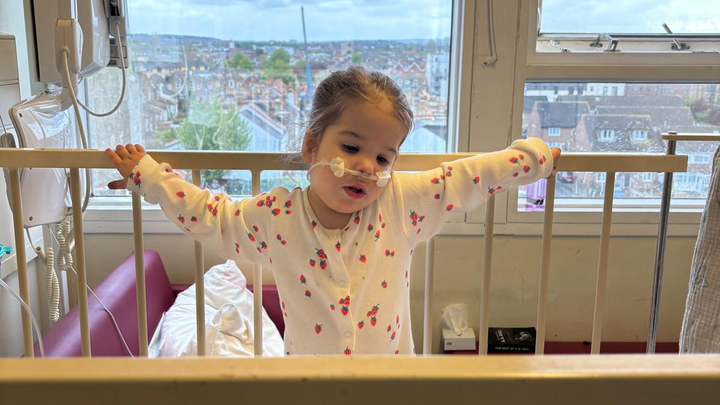
Walk for Etta
Donation protected
The walk:
I am a student at Charterhouse School in Godalming and one of the school traditions for first year A - Level students is to walk 50 miles, from Brighton back to Surrey, over 24 hours. After realising that it would soon be time to take part in this tradition, I wondered if I could get sponsored to walk the 50 miles and donate the earnings towards research for a rare genetic disorder, Wiedemann-Steiner Syndrome (WSS), which my little cousin Etta has. Etta has been in and out of hospital for a multitude of reasons, primarily due to poor immune health, weak kidneys, and most seriously a congenital heart condition. All of the money earned will go to the WSS Foundation.
Etta:
Two years ago, I lived with my aunt on the weekends for my first year in England. In that time, I became incredibly close with all of my cousins, Arthur (now 7), Scarlett (now 5), and Etta (now 3). However, my aunt and uncle had only recently gotten a diagnosis for Etta of WSS. After being in and out and in and out of the hospital, as you all can see from the photos below, although Etta hated the hospital, she loves life more than anyone I know. When at deaths door she grasped for life and now has much less frequent visits. At the moment Etta is probably running around, talking, and singing. If I know anything from my family and I witnessing WSS, it is not a simple disorder to understand, often unpredictable, and due to its rarity is underfunded. That is the reason why I am raising money for the WSS Foundation, with an initial goal of £5000.
WSS Information:
According to the WSS Foundation, based in the USA, “Wiedemann-Steiner Syndrome (WSS) is a rare genetic disorder resulting from mutations in the MLL (also known as KMT2A) gene on the long arm of chromosome 11. The syndrome was clinically described in 1989, but was not genetically identified until 2012 by a group of researchers in England lead by Dr. Wendy Jones. The gene encodes a histone-modification enzyme — that is, it helps modify the expression of other genes. The condition is autosomal dominant, meaning that only one abnormal copy of the gene is needed for a person to have the syndrome. In a majority of cases to date, the mutation occurred de novo — that is, neither parent was affected and the mutation is sporadic. Offspring of those with WSS have a 50% chance of having WSS.
Wiedemann-Steiner Syndrome may be related to global developmental delays, sleeping difficulties, feeding and digestion complexities, unusual facial features, short/petite stature, hypotonia, dental issues, hairy elbows, long eyelashes, etc.
Those affected with Wiedemann-Steiner Syndrome often receive physical, occupational, speech, feeding, and/or behavioral therapies. Hippotherapy and music therapy have also been helpful to those affected by WSS. School-aged children affected with WSS may benefit from one-on-one aides, modified instruction, and/or special day class environments.”
Organizer
Theo Nydes
Organizer
England